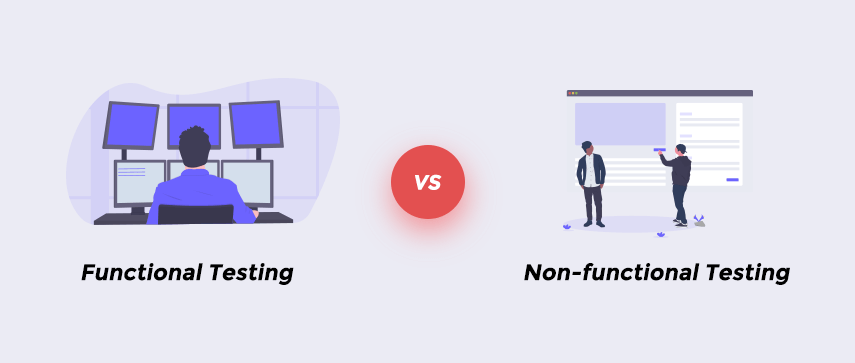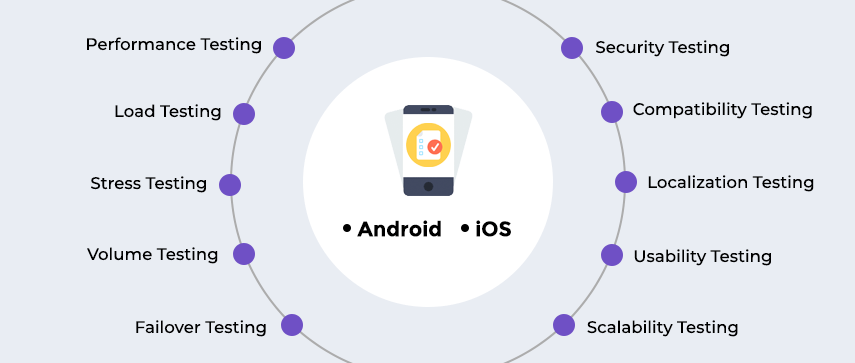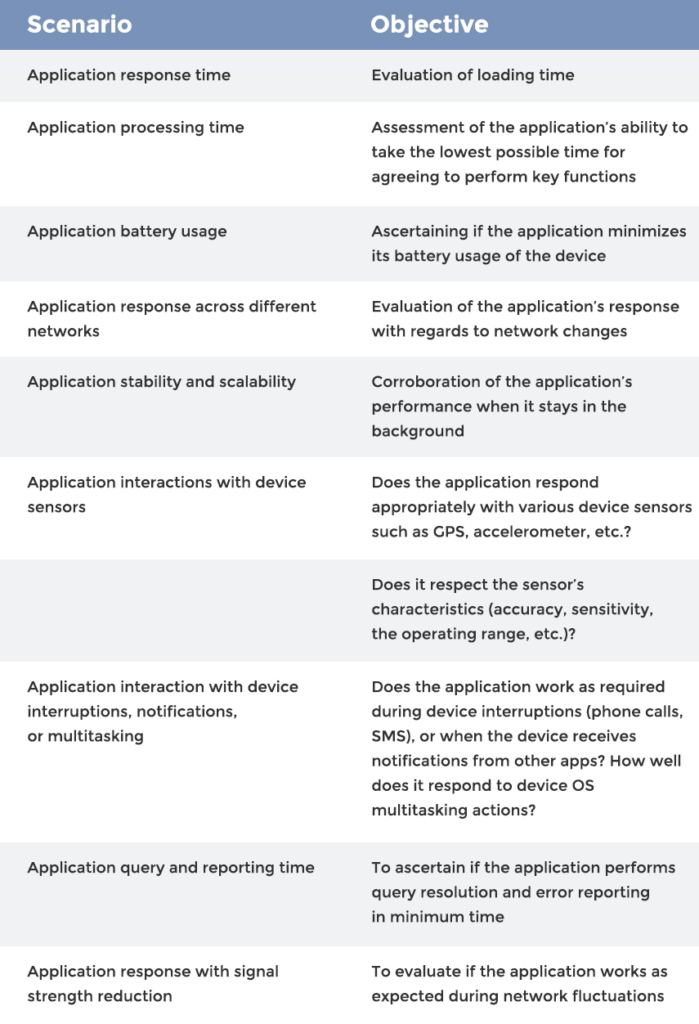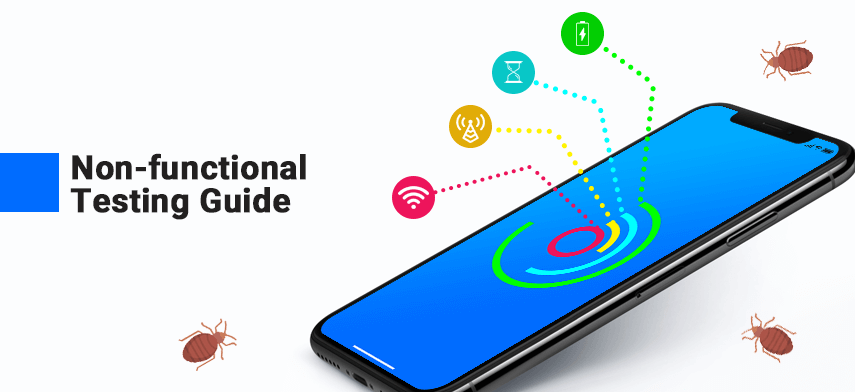Testing is a crucial part of every software development process as it helps to ensure that not only customer satisfaction is guaranteed, but the software itself matches all standards and requirements. While testing was traditionally limited to the functional requirements, the concept of non-functional testing has gradually come under the spotlight. Its growing importance could be attributed to the fact that modern applications and their ecosystems have both undergone drastic transformations.
The older applications usually used to run in closed, largely undistributed environments where everything was generally within control. However, the arrival and widespread utilization of cloud computing and microservices have changed the face of the applications and their ecosystems. Non-functional requirements (NFRs) have become as important as their functional counterparts, and the need and importance of testing these NFRs have consequently become equally important.
What is Non-Functional Testing?
Non-functional testing refers to the testing of those aspects of a software application which are not connected in any way with a defined user action or a function.
As the name suggests, it concentrates on an application’s non-functional aspects such as performance, usability, security, compatibility, and all other aspects that are not tested under functional testing. Non-functional testing is performed to verify these NFRs and if the system’s behavior is in accordance with them.
The following are some of the significant non-functional aspects of an application that are considered and tested under non-functional testing:
- How does the application behave and perform under normal circumstances?
- How does it behave when a large number of users log in simultaneously?
- How much stress could the application handle?
- How secure is the application?
- Is the application robust enough to recover from a disaster?
- Does the application show similar behavioral patterns in a different environment or OS?
- Are the documents accompanying the application easy to understand?
The singular purpose of NFR testing is to ensure that the application works well with regards to the non-functional aspects.
Ultimately, the motive of non-functional testing is to test all characteristics of an application that would help to provide an application which meets the business expectations.
The Importance of Non-functional Testing
Consider an application that is developed and wholly tested for functional requirements, but non-functional testing is not performed. Now imagine what would happen when the application goes live and is immediately subjected to a massive load.
In the absence of non-functional testing, you would be very unsure of the application's ability to handle massive traffic. The application may become slow or even crash in the worst case scenario. What an embarrassment that would be! In another scenario, imagine if the application is not tested for security, if that is the case then an unauthorized party could easily crack the data entered by the app users.
Non-functional testing is as important as functional testing. It ensures security and establishes the reliability of the application. It ensures that the application developed is robust enough to work under duress. The application’s compatibility with various devices, its user-friendliness, its endurance and a host of other vital parameters are established and verified through NFR testing.
Functional vs. Non-functional Testing: What Differentiates the Two?

Though both functional and non-functional testing is performed with the objective of delivering an application in line with the demands of the business, there are many differences between the two.
A detailed analysis of functional vs non-functional testing throws up the following points as the major differentiators between the two.
- Functional testing is concerned with how well the system works, but non-functional testing is concerned with how well the system responds. For instance, functional testing may test the mechanism for inputting data, but non-functional testing may test the speed at which a document is saved.
- Functional testing is largely based on the customer’s requirements, but its counterpart is based on the customer’s expectations. Unlike previously, modern businesses differentiate between the customer’s requirement and expectation and the growing emphasis placed on the customer’s expectation has made non-functional testing a non-negotiable.
- Customer feedback has far greater utility for non-functional testing. Even though functional testing also benefits from this feedback (as it helps reduce the risk factors of the product), non-functional testing stands to gain (and lose, if customer feedback is not provided) a lot more because it lets the testers know what the customer expects and helps them improve the product.
- It is hard to conduct a thorough and efficient non-functional testing process in the absence of appropriate tools. This is not a problem with functional testing which could also be done manually with the same efficiency.
- Functional testing is performed only before the application goes live. Certain types of non-functional testing such as maintenance testing and documentation testing are required to be performed once the application has gone live.
- Another key difference lies in the very nature of the requirements on which the tests are based. While functional requirements specify which functionality needs to be tested, non-functional requirements define how it needs to be tested. Also, the implementation plan for both types of requirements are described in separate places; the one for functional requirements is defined in the system design document while that of the non-functional requirements is defined in the system architecture.
- The functional vs non-functional testing comparison could be better explained through its examples. Under functional testing, you may test if providing the username and password on the login screen allows users to log in to the site. Under non-functional testing, for example, you check if the user can login to the site within 3 seconds by providing the username and password.
Types of Non-functional Testing

Among the many variants of NFR testing, the following are the most important non-functional testing types.
Performance Testing
Performance testing is done to evaluate the system’s overall performance. The process involves measuring the response time of the system as a whole and that of the crucial app elements as well. This test may be conducted as a part of integration testing or even system testing.
Load Testing
Load testing is one of the most important non-functional testing types. It is done to evaluate the system’s performance under normal conditions. The normal usage scenario is repeated with a large number of users to determine the consistency of app response times. Load testing helps to ascertain the system’s ability to handle the sustained pressure of multiple users logging in concurrently. Make sure that you conduct the test on a dedicated server which creates a simulation of the actual environment and that the database is realistic.
Stress Testing
Stress testing is done to assess how the system reacts when it is pulled beyond its capabilities. The difference between stress testing and load testing is that only the maximum allowable load is generated in load testing whereas the load generated in stress testing is beyond what you expect the system to handle. This test helps to evaluate if the system performs along expected lines when it is low on resources.
Volume Testing
Volume testing judges the system’s performance and how it exchanges data and information in the context of an excessive amount of data. You can check and know the volume of data beyond which the system will cease to function.
Failover Testing
Failover testing is done to verify how well the redundancy mechanism functions in case of an unexpected failure or when a heavy load challenges the system. It verifies if the system is capable of handling extra resources such as servers in the event of a system failure.
Security Testing
One of the most crucial non-functional testing types, security testing is undertaken to ensure that there are security loopholes in the application for data thieves to explore. It goes a long way in negating the threats of data thefts. Confidentiality, integrity, authentication, and authorization are the main areas tested under this type of non-functional testing.
Interesting Read: Vital Tips to Make Mobile Apps HIPAA Compliant
Compatibility Testing
Compatibility testing allows you to verify if the application is compatible with different browsers, devices, and operating systems; all at vastly different strengths of configuration.
Localization Testing
Localization testing verifies the application in different locales (and hence in different languages). The primary focus is on testing the content and GUI of the application and ascertaining if it is ideal for a particular locale.
Usability Testing
Simply put, usability testing measures the user-friendliness of the application’s interface. When you test GUI, usability testing becomes particularly important. It also evaluates error reportage and error diagnosis.
Scalability Testing
Scalability testing verifies the application’s ability to handle increased traffic, a spike in the data volume, or an increase in the number of transactions. The system must work as expected when these parameters are increased.
Other Worthy Mentions
Instability Testing
To check the smoothness and correctness of software installation and uninstallation processes.
Endurance Testing
To evaluate the system’s behavior when the load is increased for a prolonged period.
Recovery Testing
To evaluate if the application terminates gracefully and data is recovered appropriately in the event of a failure.
Disaster Recovery Testing
To verify the success rate of recovery in the event of a critical failure.
Reliability Testing
To verify if the application gives the same, expected output over a period.
Portability Testing
To determine if the installation of the application on a different platform or system would affect its functionality.
User Interface Testing
To evaluate the graphic user interface.
Documentation Testing
To evaluate the documents and user manuals.
Non-functional Testing Examples

The following non-functional testing examples, comprising of various scenarios and corresponding objectives would help you understand the concept better.
Wrapping Up!!
Non-functional testing is a crucial component of software testing. No testing process could be considered complete without it; because it ensures that the application or product behavior is acceptable and completely in line with the needs of the business.
Non-functional testing requires strategizing and planning. You can include the non-functional testing details either in the test plan or could alternatively devise a separate strategy for it. Either way, the eventual goal is to cover all non-functional aspects of the concerned software comprehensively.





 March 7, 2019
March 7, 2019


